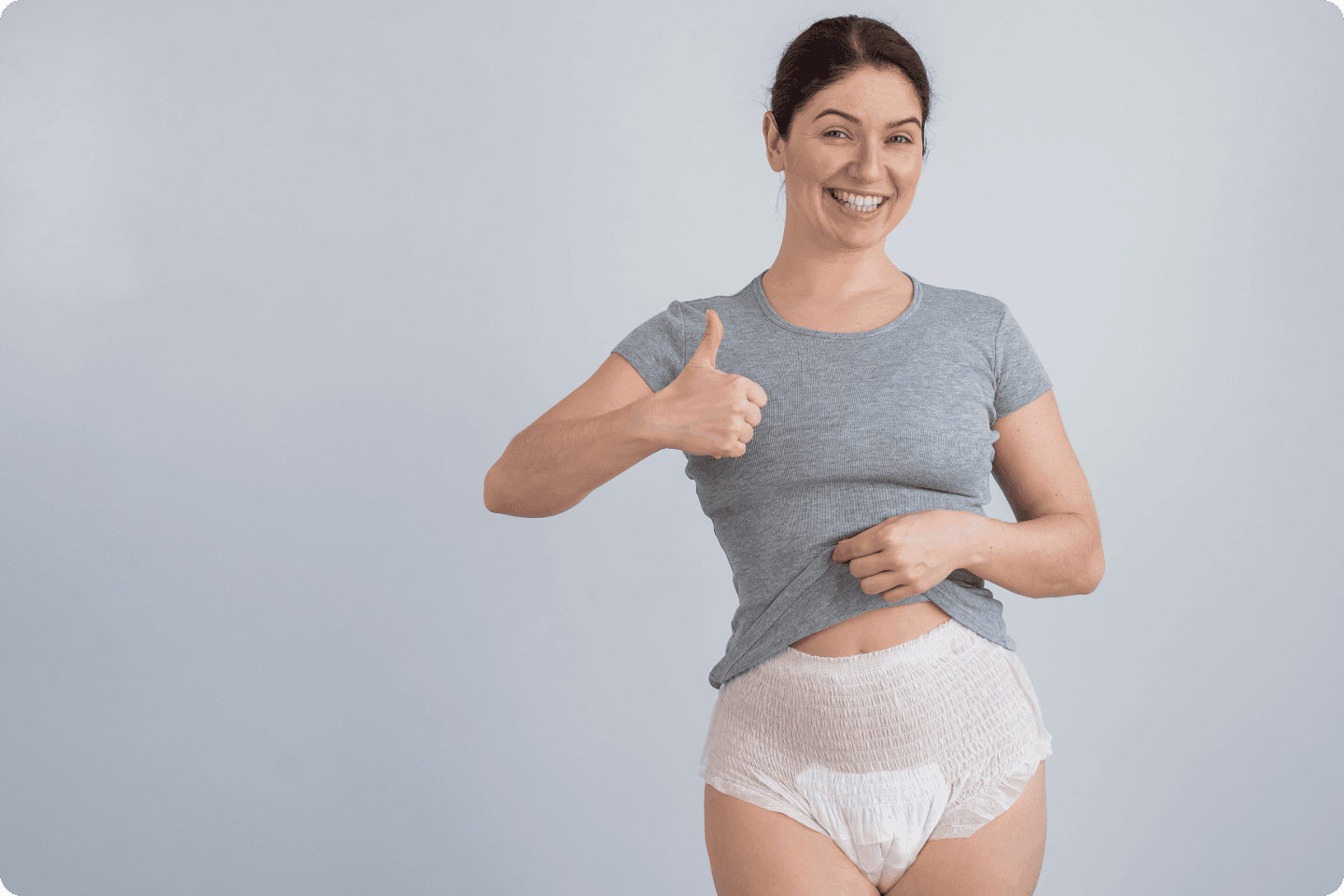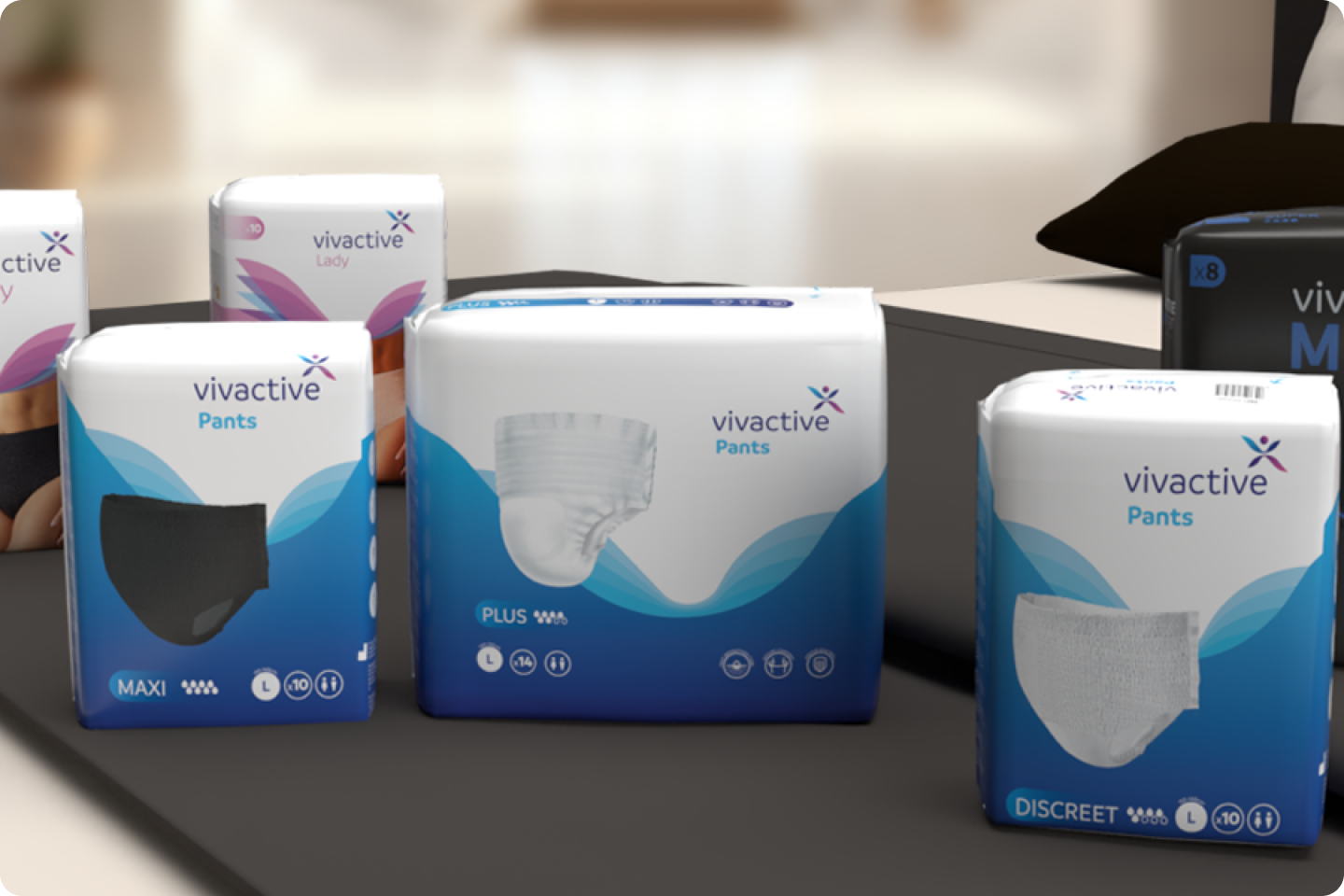All Articles
7 min read
Tips for Managing Bladder Weakness
Written by
Incontinence Choice
Published on
September 13, 2024

Urinary incontinence can be an uncomfortable experience sometimes, but it’s more common than you might think. Millions of people around the world experience some form of incontinence, with 1 in 4 people in the UK thought to experience bladder leakage. Luckily, there are some really effective strategies to help you manage it. In this article, we’ll take a look at the different types of incontinence, and some general tips you can deploy to help.
Understanding Urinary Incontinence
Before we dive into the tips, it’s important to know what urinary incontinence is. Urinary incontinence is the involuntary leakage of urine. It ranges from occasional minor leaks to chronic, severe wetting. There are several types of urinary incontinence:
- Stress Incontinence: Stress incontinence is a common type of urinary incontinence characterised by the involuntary leakage of urine during physical activities. Usually, ones that put pressure on the bladder. This can occur during everyday life when coughing, sneezing, laughing, exercising, or lifting heavy objects. It happens when the muscles and tissues supporting the bladder and urethra become weakened. Things like childbirth, ageing, obesity, or pelvic surgery can result in stress incontinence. As a result, the bladder experiences increased pressure and is unable to retain pee effectively. You can manage your stress incontinence with activities including pelvic floor exercises, lifestyle modifications such as weight loss, avoiding bladder irritants, and in some cases, medical treatments or surgical interventions.
- Urge Incontinence: Urge incontinence, also known as an overactive bladder, usually describes a sudden, intense urge to urinate followed by involuntary leakage. This occurs when the bladder muscles contract uncontrollably, leading to a strong need to pee even when the bladder isn’t full. There are a lot of things that can lead to urge incontinence, including urinary tract infections (UTIs), bladder irritants (like caffeine or alcohol), neurological disorders like Parkinson’s disease or multiple sclerosis, and certain medications. Some lifestyle changes can help manage urge incontinence, such as bladder training to gradually increase the intervals between bathroom visits, avoiding triggers like caffeine and alcohol, and maintaining a healthy weight.
- Overflow Incontinence: Overflow incontinence occurs when the bladder is unable to empty completely, leading to frequent or constant dribbling of urine. This is often caused by a blockage in the urinary tract, such as an enlarged prostate in men, or due to weakened bladder muscles that can’t contract properly. It can also be caused by nerve damage from conditions like diabetes, multiple sclerosis, or spinal cord injuries, which disrupt the signals between the bladder and the brain. People with overflow incontinence may feel as though their bladder is never fully empty and may experience frequent urination in small amounts. Managing overflow incontinence typically involves treating the underlying cause.
- Functional Incontinence: Functional incontinence is a type of urinary incontinence where a person is unable to reach the bathroom in time due to physical or cognitive impairments, despite having a normally functioning bladder. This condition can come from mobility issues, such as arthritis or injury, which make it difficult to move quickly, or from cognitive disorders like Alzheimer’s disease or dementia, which affect memory and judgment. Managing functional incontinence might include using mobility aids, ensuring clear and quick access to the bathroom, implementing scheduled bathroom trips, and utilizing incontinence products for extra protection.
Now that we have a basic understanding, let’s explore some tips to manage urinary incontinence effectively.
Stay Hydrated
Drinking water is essential for keeping the body healthy. The British Nutrition Foundation recommends drinking six to eight glasses daily. But what about if you’re managing incontinence? It’s really important to understand how much water you should be drinking every day.
Drinks like squash and cups of tea are both sources of hydration and taste great. Alcohol, however, is definitely not a good alternative. Alcohol causes all kinds of problems in your body, notably dehydration and it can make your bladder weakness worse.
The best way to tell if you’re drinking enough is to have a quick look at your pee. It’s not the most glamorous thing to do, but it’s a surefire way to tell if you’re on the right track. If your pee is the colour of champagne, you’re doing well. If your pee is a darker colour (pale ale if we are sticking to alcohol comparisons) then you need to drink more.
Pelvic Floor Exercises
Strengthening your pelvic floor muscles can significantly reduce symptoms of urinary incontinence, particularly stress incontinence. Building a strong pelvic floor is a really important part of helping to reduce your bladder leaks. They’re easy to perform and come with huge benefits. If you’re living an active lifestyle then getting in some pelvic floor exercises is going to be really beneficial in the long run.
1. Reduce your risk of developing incontinence
One of the primary functions of the pelvic floor is controlling the release of your poo and wee. Weak pelvic floor muscles can lead to leakage when sneezing, coughing, or even laughing. Similarly, faecal incontinence, although less talked about, can also result from pelvic floor weakness. Building and maintaining a strong pelvic floor not only reduces your risk of developing incontinence, but it’ll also help you regain control if you’re already incontinent.
2. Pregnancy and postpartum health
This one’s just for the ladies. During pregnancy, your body undergoes big changes. During this time, the pelvic floor experiences added stress. Strong pelvic floor muscles can help support a growing uterus, reducing the risk of complications like pelvic organ prolapse. Strengthening these muscles after giving birth helps with recovery and helps to prevent long-term issues, such as stress urinary incontinence. You can read all about postpartum leakage here.
3. Back and pelvic stability
Beyond maintaining continence and keeping your organs in place, a robust pelvic floor can contribute to overall body stability. These muscles work with the abdominal and back muscles to support the spine and pelvis. A weak pelvic floor can lead to issues like lower back pain and pelvic instability, affecting your mobility and quality of life.
Kegel exercises are the most well-known pelvic floor exercise. Here’s how to do them:
- Identify the muscles: The easiest way to find your pelvic floor muscles is to pretend you’re stopping a pee midstream. The muscles you use are your pelvic floor muscles.
- Contract and hold: Contract these muscles for five seconds, then relax for five seconds. Repeat 10 times.
- Increase duration: Gradually increase the time you hold the contraction.
Perform these exercises three times a day if you can.
Use High-Quality, Budget-Friendly Incontinence Products

Disposable incontinence pads, pants and adult nappies can provide an extra layer of security and confidence. Today’s products are discreet, comfortable, and highly effective. There are plenty of different incontinence products available. But some of the most common are:
- Disposable pads: The term ‘incontinence pads’ encompasses two main types: large-shaped pads and discreet pads. Unlike nappies, discreet pads are positioned inside your underwear and held in place by adhesive strips. Large-shaped pads, however, are a heavy-duty option. They are usually paired with fixation pants to hold them in place and provide extra security.
- Adult nappies: Adult nappies are also sometimes known as adult diapers or slips. Different websites or suppliers might refer to them as different things, but if you see ‘slip’ or ‘diaper’ you’ll be looking at an adult nappy. They’re designed for maximum absorbency and coverage. Their fully enclosed build means you’ll get superior leakage protection. They offer similar absorbency levels to pads, but the fully enclosed design can make some people feel less anxious knowing they’re fully protected.
- Disposable pants: Incontinence pants offer a convenient and discreet option for managing incontinence. They’re designed to fit like regular underwear, providing a secure and comfortable fit. You pull them up and put them on the same as you would regular pants/briefs, but these feature a super-absorbent pad that soaks up any liquids you can throw at it. You can get multiple uses from the same pant and once it’s full, you simply tear the sides, pack up and dispose.
Experiment with different products to find the one that works best for you.
Seek Medical Advice
Bladder leaks can be an uncomfortable and sometimes embarrassing thing to go through. But, like we said, a lot of people are going through the same thing. GPs are well versed in everything that goes on down there and they see people with bladder weakness all the time. While it might seem like a minor and manageable problem at first, it can sometimes get worse. Going to see a GP will help you get a solid understanding of what’s going on with your body and help you to manage the situation better.
- They can help identify any possible underlying causes
- They can help you access the right treatment
- They can provide education and support
Stay Positive and Patient
Managing urinary incontinence is a journey that requires patience and persistence. Celebrate small victories and remember that improvement takes time. Surround yourself with supportive friends and family who understand what you’re going through.
Education and awareness: One of the best ways to help other people understand what you’re experiencing is through education and awareness. Learn as much as you can about incontinence and through your own knowledge and experiences you can dispel misconceptions and challenge negative attitudes. Public awareness campaigns, informational resources, and community events can all play a big role in fostering understanding and empathy.
Open and honest conversations: Encouraging open and honest conversations about incontinence can help normalise what you’re experiencing and create a safe space for people to share their experiences. By breaking the silence and speaking openly about your incontinence, we can promote understanding and compassion, while also offering support and solidarity to those who may be struggling.
Support groups and networks: Joining or starting support groups and networks specifically for individuals with incontinence can be seriously beneficial. They provide an opportunity for people to connect with others facing similar challenges, share advice, exchange coping strategies, and offer emotional support. By fostering a sense of community, these groups can help combat feelings of isolation and empower you to overcome the stigma associated with incontinence.
Who are Vivactive?

Vivactive are a budget brand with a difference. They provide premium products, rivalling and sometimes beating the leading household name brands. The big difference? Their products are far cheaper. With Vivactive you can get the same comfort and practicality from the brands you’re used to, but at a much lower price than your traditional supermarkets or pharmacies.
We totally understand that everyone has a massive shortage of money at the moment, but you shouldn’t have to cut back on necessary items like wearable incontinence products to make ends meet. Incontinence items aren’t a luxury, they’re a necessity, and you shouldn’t have to pay over the odds to get a good quality pair of disposable pants.
Their online-only approach means that they can offer products far cheaper than supermarkets and pharmacies. They’re also experts in the field, priding themselves on fantastic customer service – they really care about people with incontinence.
Purpl members can get an Incontinence Choice discount code and save 15% off as a new customer – click here to get your code
Health Related Disabled Discounts
Simple Life Disabled Discount Code – 70% off weight loss plans
Supply Life Disabled Discount Code – 25% off food intolerance tests
Taking Care Disabled Discount Code – £40 off personal alarm
